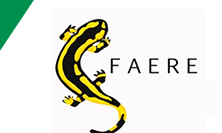Despite the growing political attention paid to ecosystem services (ES), this concept remains underused to support practical decisions in conservation/development programs. One of the most important knowledge gap for a better consideration of ES in territorial decision-making is related to their spatial assessment and mapping. Yet, from a planning perspective, knowledge on non-market benefits derived from ES combined with geographic information systems (GIS) are potentially powerful analytical tools for public land managers. In this paper, we assess the management strategy of a Regional park in Eastern France, by assessing and mapping two major ES under issue in the study area: recreational attractiveness and natural habitat quality. Because the area under study is a large territory, primary valuations techniques would have been difficult to apply. We thus develop a methodology to characterise the recreation supply and demand in the area by basing predictions on a hedonic function of biophysical supply and a travel cost model, both fed by GIS. We further transfer the supply and demand functions in the whole territory covered by the park, allowing for the mapping of a recreational attractiveness index. To our knowledge this constitutes one of the first attempts of benefit transfer based on a travel cost method, and the process is reproducible for any other travel cost study. Habitat quality is computed with the InVEST module based on habitat suitability and pressures of different land use and land cover. Results of our spatial statistics analysis show that the territorial strategy is globally accurate according to the recreation strategy, however results are more ambivalent for habitat quality.




